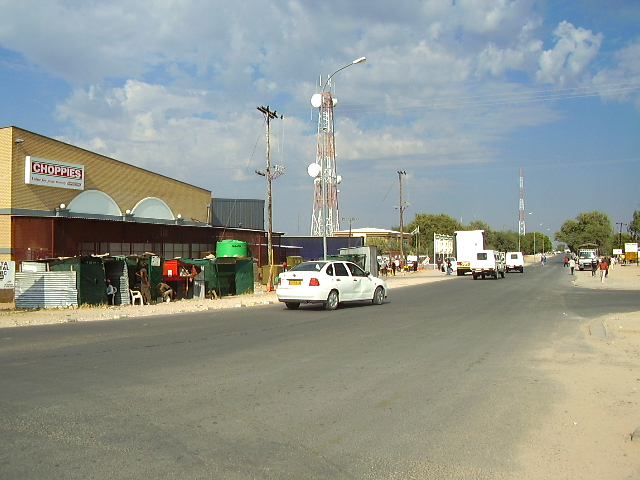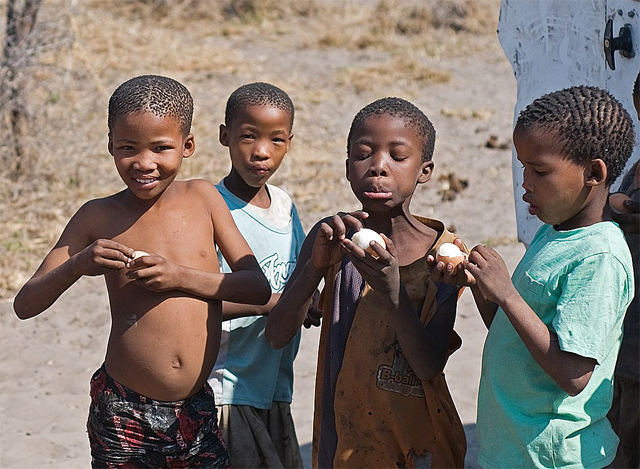A Botswana newspaper last week revealed that the government has hatched a plan to “infiltrate and control” the San people who live in the Central Kalahari Game Reserve—the G/wi and the G//ana. According to the Sunday Standard news story, officials from both the national department of wildlife and from the Ghanzi District have formed an agency called the Memoghamogu Community Trust, which has the stated objective of allowing residents of the CKGR to utilize natural resources sustainably.

The five G/wi and G//ana settlements in the CKGR that the document designates as beneficiaries of this new agency are Metsiamanong, Mothomelo, Gope, Molapo and Gugama. It indicates that the residents of those communities will elect a board of trustees and that the trust will establish an office in the town of Gantsi. The goals are to monitor and protect the natural resources of the CKGR against any misuses and to develop good management practices that will protect their sustainability.
“The Board of Trustees shall establish and develop Resource Governance regulations as determined by the beneficiary or the grantor for any resources over which the Trust has been granted rights of utilisation,” the document says. The San people interpret the proposal as giving the trust the power to manage and control their way of life. They are strongly, heatedly, opposed to the whole thing.

Some San responded to the threat, as they perceived it, by writing a letter last June to Loeto Porati, Ghanzi District Commissioner, which denounced the establishment of the trust. They reminded the official that they had won against the government in their court suit that established their right to live in the CKGR. They also warned that if the government persists in its plan to establish the trust, they will take it to court again. They also denounced their former leader, Roy Sesana, who took a position with the government—he could no longer represent them in this dispute.
Porati replied that the government had no intention of forcing a trust down the throats of the CKGR residents if they don’t want it. The government was prepared to show the residents the value of a community trust and it would assist them financially if they would accept one, but it would not force the issue. They certainly had the right to go to court if they wished, but the government would be glad to give advice on many matters if they wanted it.
Jumanda Gakelebone, a prominent activist regarding San concerns in Botswana, said he was not aware that a trust had been established. No one had consulted him when the idea of establishing a trust was being discussed. An article in the Sunday Standard last July about the brewing controversy expressed San frustrations with the government even more clearly. The San eight months ago strongly questioned the intentions of the government’s stated plans to drill new boreholes for water in the reserve—why the change in heart?
They have drilled their own boreholes, the newspaper reported in July, no thanks to the government. A two-minute YouTube video shows the pleasure of the people of Mothomelo when they opened their new borehole in 2011. As they saw it last July, the government for decades had discriminated against the San people in the reserve. Their skepticism was understandable. Why did the government want to restore services now, they wondered?
“We would like to know how these services are different from the ones that [the] government terminated in 2002. We also want to know if this is done in good faith,” they demanded. Referring to the growing controversy about the proposed trust, they also wondered “how the trust is related to some of our rights which were reaffirmed by the High Court and Court of Appeal respectively. Are these latest developments not in contempt of court,” the San asked. Although the two newspaper articles did not say so, the flap in the CKGR reflects a severe lack of trust for the government by the G/wi and the G//ana people.